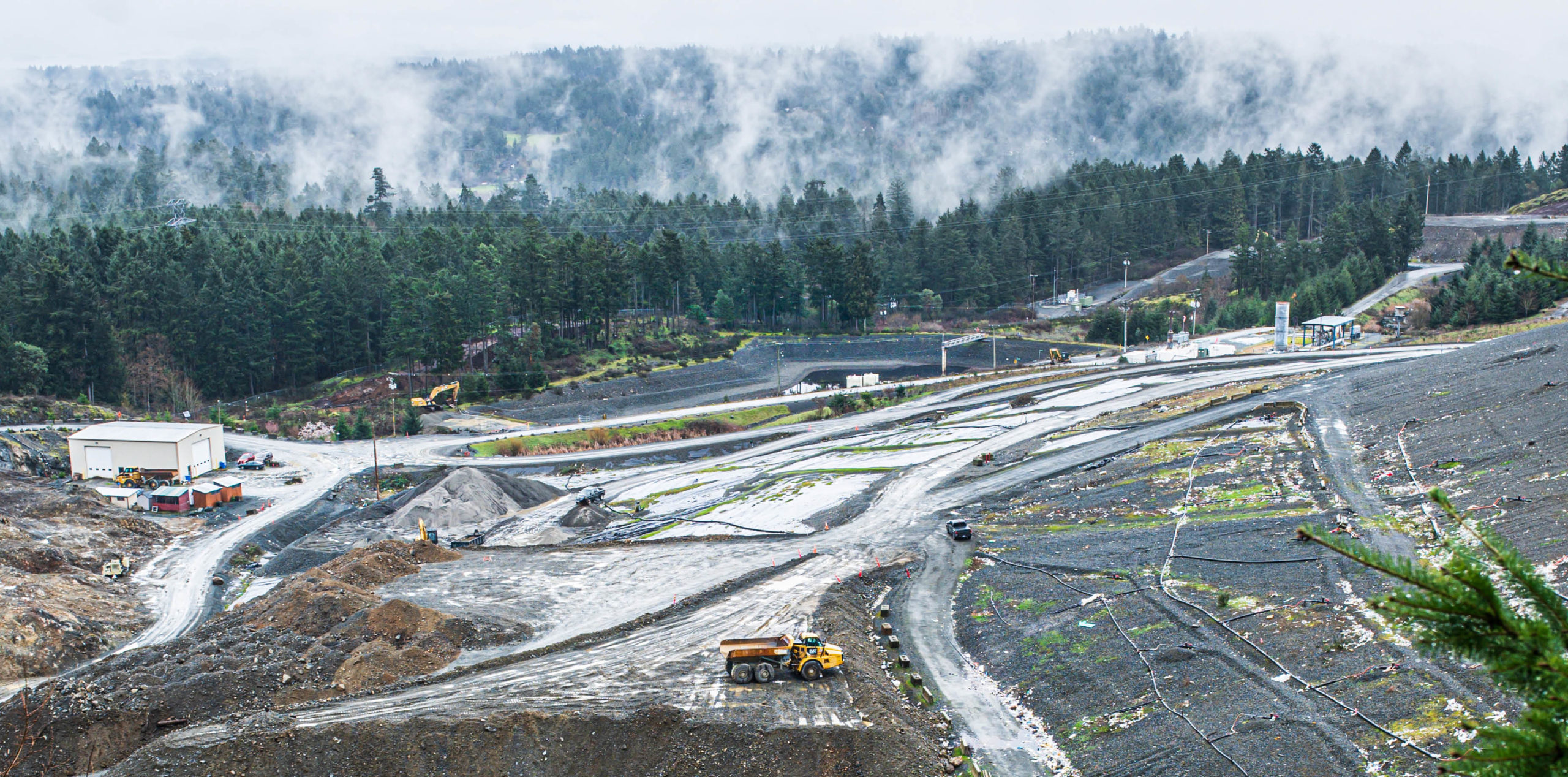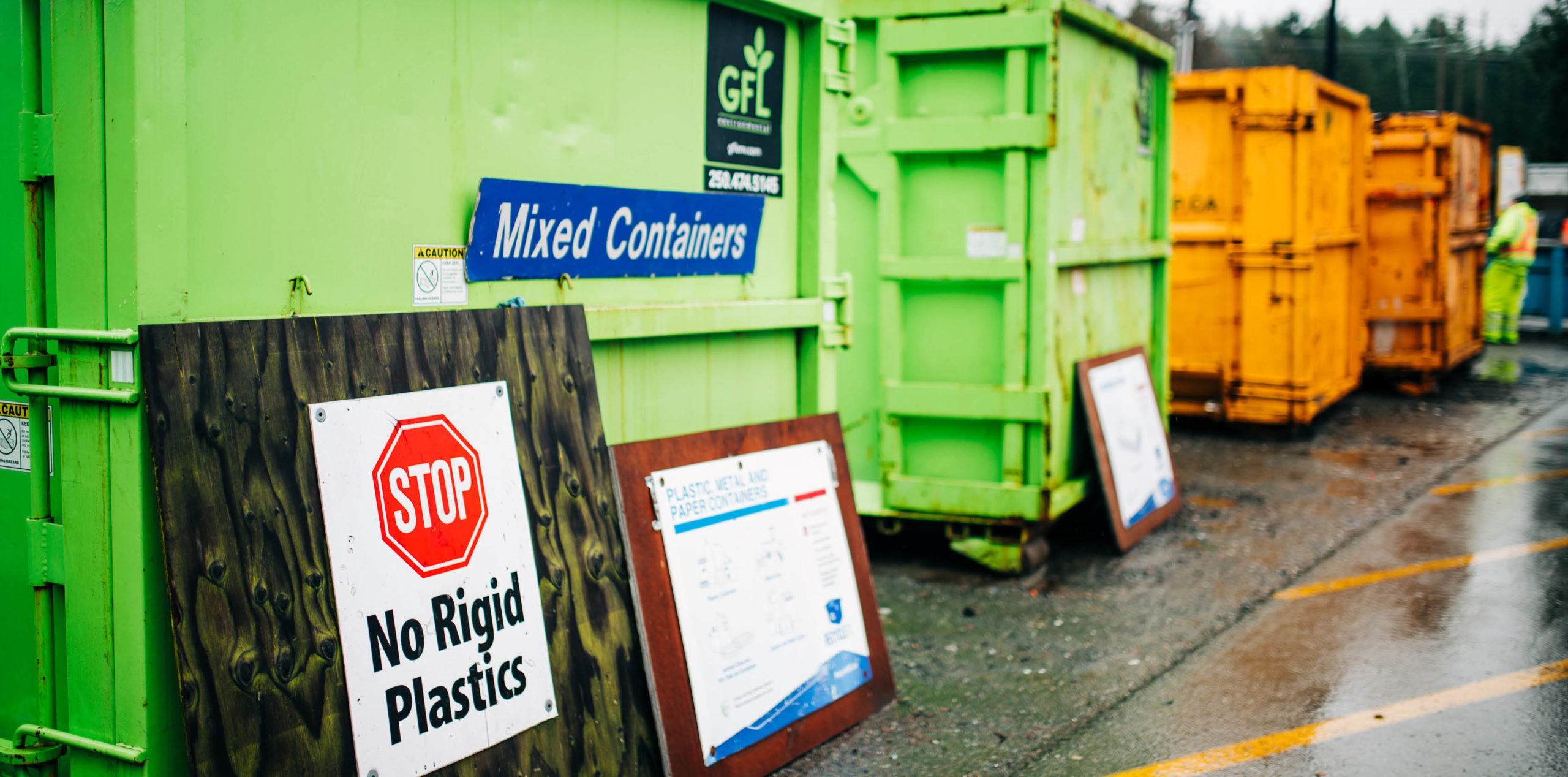by Deborah Rogers | photos by Janis Jean Photography –
Curbside recycling, environmentally friendly, or just a way to make us feel better about consumption? I wanted to know what happens once we’ve rinsed our cans and separated our paper waste, put out our blue bags and boxes and forgotten all about last week’s garbage.
To really dig into the subject I spent the afternoon with Russ Smith, CRD’s Senior Manager of Environmental Resource Management at the CRD Hartland landfill facility. He was happy to fill me in on the realities of our curbside recycling scheme, but there was lots more to learn about besides.
Garbage and recycling is big business for the companies that haul it, and trade in its raw materials; it’s a big headache for the municipalities though, as increasing population and consumption means tonnes of waste to manage. How much waste are we producing each year? A horrifying 350kg per capita! A new solid waste management plan will set out steps to reduce the region’s waste to 250kg per capita within the next 10 years.
First stop for most households is their blue box and garbage bin. Only six of the CRD’s partnering municipalities use the solid waste collection services they operate: e.g. garbage is picked up in Sidney, but not in North or Central Saanich. In those places you have to select a private company, or bring your own waste to Hartland.
You pay to dump waste, but you do not pay to recycle. Driving through there’s a weigh scale that determines the fee, and should you be trying to dump an item that is recyclable, attendants will attempt to provide education. You’ll save yourself money, and save some precious landfill space, if you make an effort to recycle everything possible.
I think we all understand that resources used to create products are lost forever when items are thrown in the garbage. By recycling, we take responsibility for the products we purchase and support a system where those materials can be used over and over again. A limited number of materials are collected through our Blue Boxes, but at Hartland’s public drop-off area you can leave many recyclable items as well as household hazardous waste, reusable items and anything that is really important to keep out of landfill. Used motor and vegetable oil are collected, styrofoam, soft plastics, batteries, lightbulbs, paint, books, bikes, household appliances … the list is long and worth checking for yourself.
Whilst we can all agree that it’s better that all these items are not going into landfill, it still starts to feel a little shocking when you look at the volume of items. If you want to get into the nitty gritty of what happens to those recyclable products you should head over to www.recyclebc.ca and watch the short video: What Happens to my Recycling.
Behind the public drop-off area lies the majority of the vast 125-hectare site. You’re thinking “Behind the Scenes at the landfill” means looking at garbage, right? Wrong. What the public can’t see is an extremely well-managed site with very little active landfill visible. The “active face,” where large trucks pull up through the working day to dump their loads, is a whirl of motion. There are heavy machines pushing and compressing the garbage, screechers going off every few minutes, with smoke and sounds to scare off seagulls, and at the end of each day the visible garbage is covered to ensure as little as possible is accessible to the wind or to animals or birds. Also happening behind the scenes is frequent blasting. This creates air space, as the rock is removed, and that rock is crushed and brought back to be layered in with the landfill garbage, creating a strata effect. Space is everything, so garbage is compacted and compressed as much as possible.
Snaking over the crushed rock surfaces you see metres of piping, extracting gas from the decomposing material beneath. They connect to Hartland’s power plant where that harmful methane gas is converted into electricity. The facility produces close to 1.6 megawatts of power – enough electricity to supply about 1,600 homes. The gas extraction and electricity production come under the remit of Resource Recovery and Residuals Management. It’s a huge component of the waste management puzzle alongside the environmental safeguards of the water and surrounding environment. Wherever possible Russ and his team are looking for ways to divert resources from being wasted, and to have as little impact as possible on the land around them.





